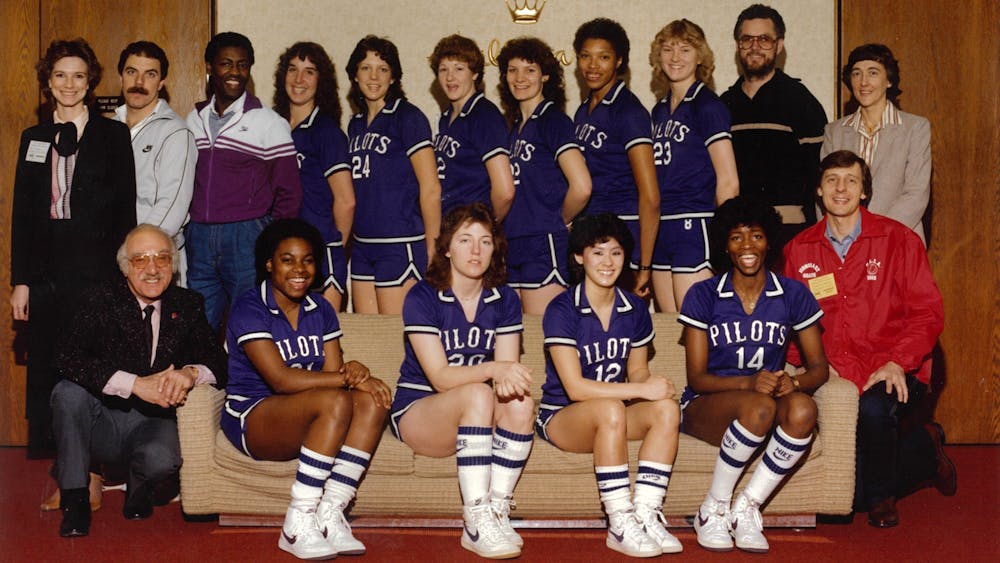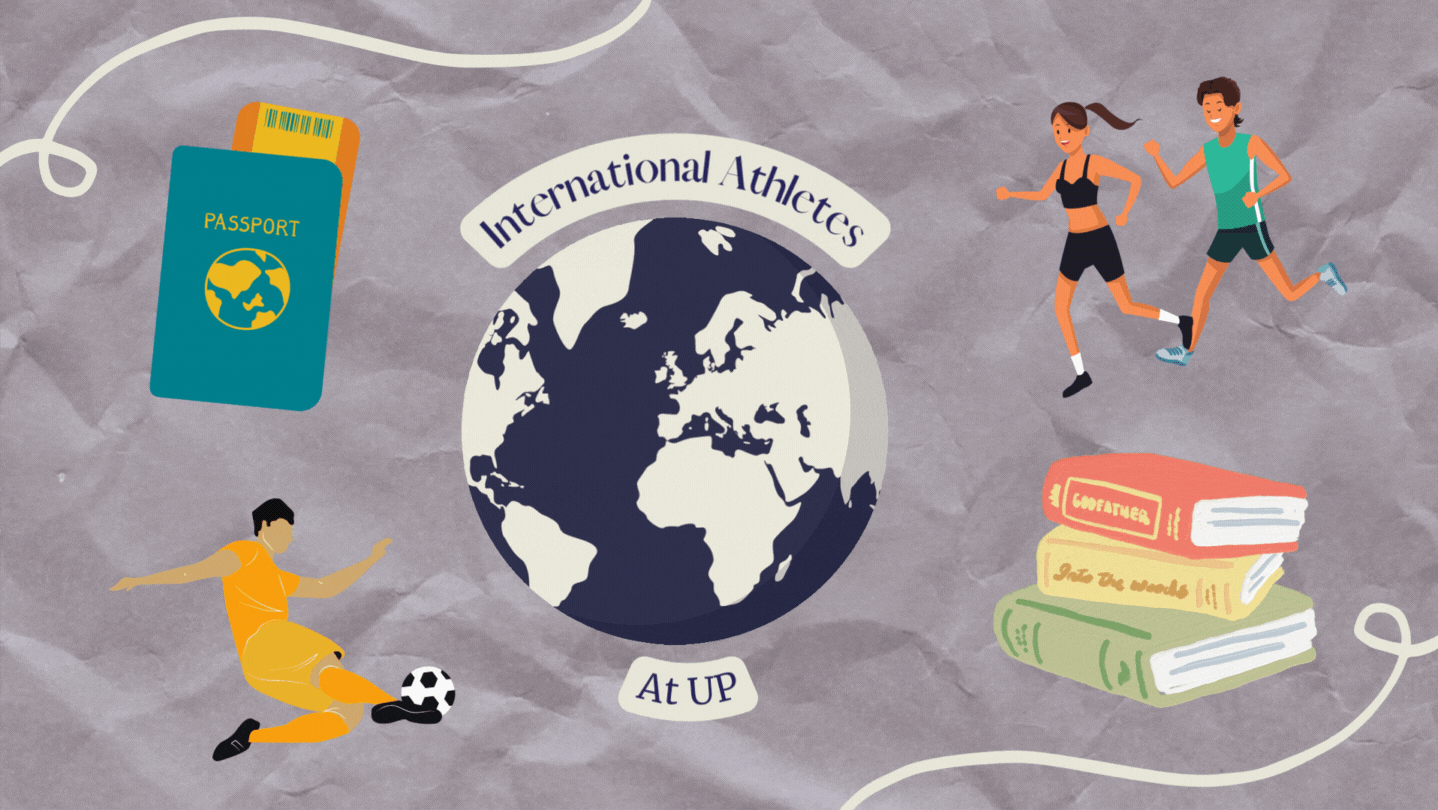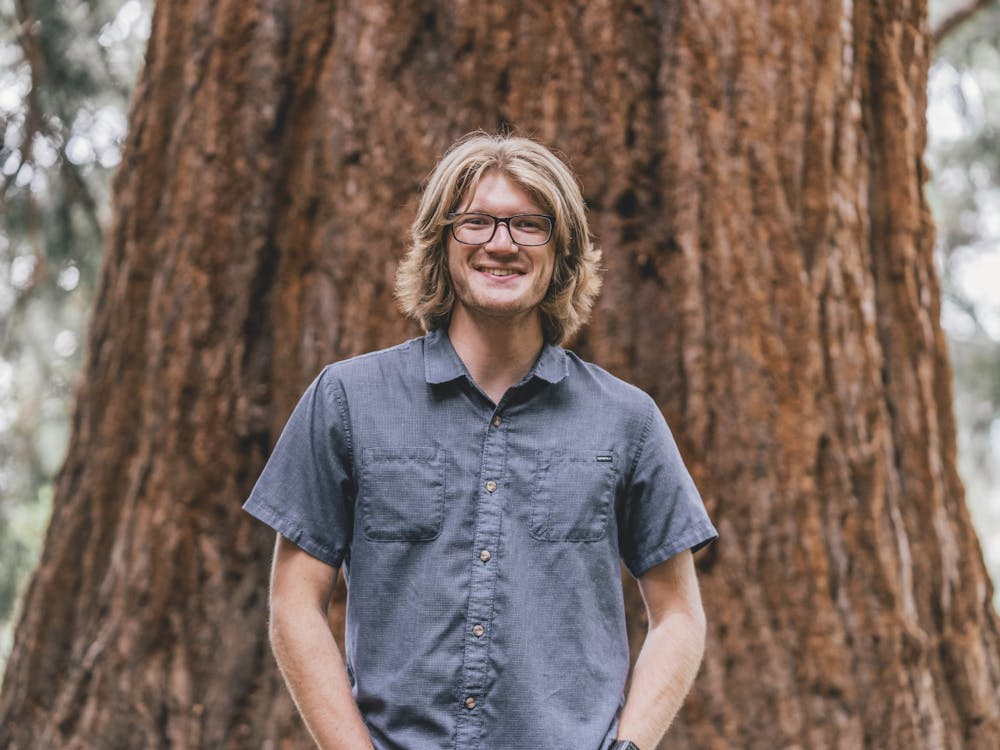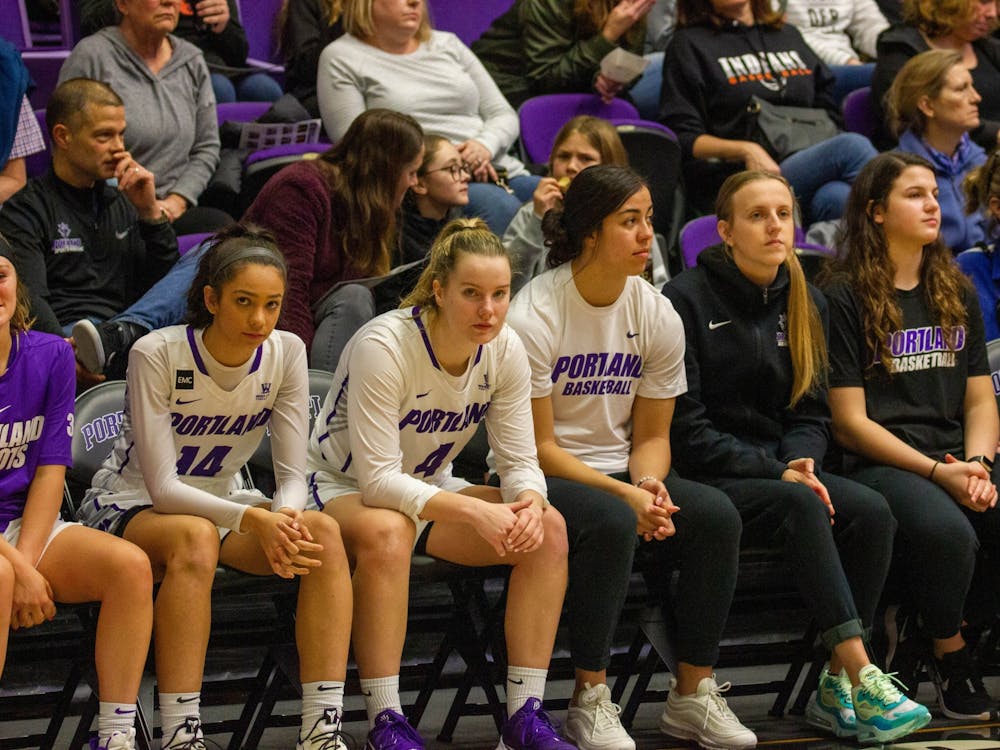The year is 1979. Moe O’Connor and her husband, Russ, have been living in the Pacific Northwest for just over a year, having moved there after Russ got a job working for Intel. She had grown up an athlete, having played tennis primarily and doing so in college at Bradley University. It wasn’t a unique thing to her. Back in Chicago, her hometown, it was just expected that women competed in sports back in the day, at least at her high school.
It became a national expectation in 1972, when the Education Amendments came into effect. A part of those amendments was what is now known as Title IX, a federal civil rights law. This states that there can be no discrimination based on sex in school or in any other education program that receives government funding. It’s the law that allowed organized women’s sports to exist as it does today.
In 1972, the schools had seven years to become compliant with Title IX and start women’s sports programs. The University of Portland waited the full seven years, and with 1979 right around the corner, they needed someone to step in and be the athletic director for women’s sports.
That’s where O’Connor, a 27-year-old former athlete who was teaching high school P.E. in Illinois just a year and a half earlier, came in. Then-UP Athletic Director Joe Etzel reached out to O’Connor and tabbed her as the person to oversee the installation of Portland’s women’s sports programs. O’Connor had become the main figure in starting seven women’s sports programs at the University of Portland.
“I was the only person and I hired some part-time people,” O’Connor said. “When I was hired, my job was to integrate the (women’s) sports, the coaches, the students … that was my job, to get those going.”
Fast forward 40 years and here on The Bluff, the University of Portland Athletics Department has seen much success in women’s sports. Our women’s soccer team won two national titles in 2002 and 2005 and has produced soccer legends like Christine Sinclair and Megan Rapinoe.
Our women’s basketball team has a proud history, including most recently winning the WCC Championship back in 2020 and qualifying for the NCAA Tournament before COVID-19 put the sports world on pause.
Our women’s cross country team has made nationals three times in the last seven years and produced an All-American runner this year, Laura Pellicoro.
There’s no better day than National Women in Sports Day to celebrate these icons. The list of successful female athletes and teams to come through The Bluff is long, and the list doesn’t exist at all if Title IX didn’t go through over 50 years ago. It’s people like Moe O’Connor who made it possible. Her story shows the importance of those early years and why we can’t stop pushing for more.
“For student-athletes to realize [it’s impact], I think it’s important,” O’Connor said. “I see what Title IX is doing, and a lot of the athletes are recognizing that across the nation and saying, ‘We appreciate what was done in the past.’”
The University of Portland had seven women’s teams that began in 1979: Soccer, volleyball, tennis, cross country, basketball, track and field and golf. O’Connor coached two of those teams, leading the volleyball and tennis teams as well as the cheer squad, which performed at the men’s basketball team’s home games. She was also responsible for hiring coaches for all the remaining teams and helping all of those teams schedule games, figure out logistics for travel, recruit players and a million other little things that most jobs would never think of.
The Pilots joined the National Association of Intercollegiate Athletics, also known as NAIA, the alternative to the NCAA. They competed against other Pacific Northwest colleges that were NAIA at the women’s level, including Gonzaga, Portland State, Willamette, Lewis & Clark and more.
Most schools in the area had already been compliant, possessing their own established network of teams to play every year. O’Connor had to cold call schools to see if they’d play any of their teams, hoping that would leave the door open for future matchups.
“They gave me a list of some of the local schools [like] Linfield, George Fox, those NAIA schools, and I would just look up in the directory their phone number and start calling,” O’Connor said. “You didn’t have a commitment to do something like ‘Okay, we’ll come to you this year and then you’ll come to us.’”
Scheduling was one of just several daunting tasks that came with starting seven new women’s programs from scratch. Other problems almost always came back to money. O’Connor had to fight tooth and nail for any kind of funding, making the most of whatever she got, and what she got was never enough.
“It was always like ‘Well, this is what you’ve got’ and ‘there’s not very much money to go around,’” O’Connor said. “The first year or two were especially challenging,”
The lack of money reared its ugly head in several ways. For starters, they couldn’t get the equipment they needed, such as practice uniforms, shoes, etc. Some athletes had to use old men’s uniforms for games and meets. Others had to provide their own equipment.
Getting athletes on the court was a challenge in and of itself. Schools today rely heavily on scholarships to bring players in. Currently, for example, each NCAA Division I women’s basketball team is allowed to offer up to 13 scholarships that cover various college costs, such as tuition, books and housing. In the 1970s and early ‘80s, most UP women’s teams received no scholarship funding whatsoever. Women’s basketball and volleyball at UP each received one scholarship worth a few hundred dollars that was split among however many players there were on that year’s squad.
“You just divvy it up,” O’Connor said. “You just do what you can to help students.”
The recruiting landscape in general was a different beast than nowadays. Modern recruiting requires factoring in everything from NIL money to scholarship money to location and more. There are camps all across the country that showcase recruits, videos that recruits can post online via social media or Hudl; even simply 'sliding into the DM’s' of coaches works for recruits. There are a myriad of ways for people to pop up on the recruiting radar.
But before, especially when O’Connor first started, everything was local and the pitches were simple: Do you want to play college (insert sport here)? You would go to your local high school — Saint Mary’s was a big volleyball hub, for example — you would find the players that stood out and just simply ask if they wanted to join the team.
“You weren’t having people from California or wherever come here,” O’Connor said. “It was just like ‘Okay, who’s here and who’s interested in coming (to play)?’”
It’s a tough pitch, especially when there’s minimal help financially that you can provide to student-athletes. O’Connor said the key was just being realistic with the students about what she could do for them.
“You just have to be honest,” O’Connor said. “And most people were on board. Most people wanted to come here because they wanted to come, so it was just a way of hopefully enticing some people to come here and commit.”
Money also became an issue when it came to paying coaches. Head coaches for the women’s teams could only be paid as part-time employees. Assistant coaches worked as volunteers. The women’s side didn’t have athletic trainers or team managers either, with coaches handling those tasks themselves. A full-time trainer was finally hired in 1983 — Gary Vitti, who eventually left UP to be the head trainer for the Los Angeles Lakers for 32 years.
Running a successful athletics department requires a herculean effort from a wide variety of people. O’Connor had to wear several hats in order to get the bare necessities for her teams. She even had her husband help — helping drive the vans, fill the water bottles, whatever he could do.
“I think there was a commonality within the coaching staff that, if you had a spouse that was interested in athletics, which he was, they were supportive,” O’Connor said. “It was very grassroots.”
It led to many long nights in her small office on the third floor of Howard Hall, a corridor she shared with media coordinator Mauro Potestio and several other part-time coaches. She would do her work, then practice in the evenings with her teams, coach her teams in games on weekends and nights and then do everything again the next week. There was always something to do.
“Very long hours,” O’Connor said. “Long hours, long days, weekends and evenings … it was just figuring things out.”
But as much as it felt like beating her head against the wall at times, the work was rewarding for O’Connor. They were giving young women the opportunity to play organized college sports. And the best part — they were thriving when no one thought they would.
During O’Connor’s years as a coach, the women’s tennis team finished second in their district in 1983 and produced national doubles champions that same year. In 1985, the women’s cross country team won the NAIA National Championship under head coach Mike Johnson. The women’s basketball team, helmed by Dave Olmstead, was one of the best in the nation as well, having won their district and region twice and placing fourth in the NAIA National Tournament in 1983. They finished second nationally in 1984, losing narrowly in overtime to UNC Asheville.
Those basketball teams featured some of the best athletes to grace The Bluff, with Lorena Legarde standing out especially to O’Connor. She was a three-time NAIA First-Team All-American and still holds eight different career records for the Pilots, including points (2,568), points per game (20.2), rebounds (1,393), blocks (269) and steals (360). She’s not just one of the best basketball players to come through Portland; she’s one of the best to ever come through the state of Oregon.
“Within a few years, there were some good showings, some national exposure for some teams,” O’Connor said. “It was a nice surprise because the expectation was not to compete nationally … the expectation was just to compete, but we did better than that.”
Legarde is an example of one of the many incredible athletes that have come through Portland. O’Connor also remembers athletes like Karyl Wing, another basketball player who still holds the record for most assists in a season (211). But it wasn’t just the players; it was the coaches like Olmstead and Johnson who, despite making little money and working hectic hours, dedicated so much time to their teams.
“The coaches were exceptional, because they realized what a great opportunity this was, even though it was a challenge,” O’Connor said. “They had day jobs, but they would work just as hard to make their program successful. And they did.”
O’Connor worked on The Bluff from 1979 to 1985. She left it better than she found it, with established teams that were slowly but surely getting more scholarships and more recognition. But it was still an incredibly difficult period. Despite that, she never thought about her experience as difficult. She endured her fair share of challenges, but truthfully it wasn’t until other teams started celebrating the 50th anniversary of Title IX that she actually reflected on her work and how challenging it was.
“I was seeing all these advertisements on TV and social media about Title IX, and that’s what spurred me to say, ‘Well, I’m just going to share it,’” O’Connor said. “And I wasn’t sure how it would be received. To be honest, I didn’t know.”
It was well received. Back in November, O’Connor came back to The Bluff for a basketball game between the Stanford women and the Pilots, getting honored pregame after delivering the game. She had come back every now and then to support the Pilots, but this was different. Beyond her being honored, over 2,000 people flooded the stands to watch the Pilot women take on one of the best teams in the country. Considering that just 40 years ago they had to fight to get bleachers that could fit 20 people just so they could watch a soccer match, it was a staggering sight.
“It was pretty amazing,” O’Connor said. “I can’t tell you how many dads came up to me and thanked me. ‘Oh, thank you for starting this for my daughter’ … I was really appreciative.”
There’s plenty of work to do to continue promoting women’s sports. Just two years ago, Sedona Prince highlighted the inequalities that still exist between men’s and women’s basketball at the NCAA Tournament. In 2021, an NCAA Gender Equity report showed that at the NCAA level, schools spend about $1,700 more on male student-athletes than females. Just because there’s more money being put into the product doesn’t mean the inequality’s gone.
So we should keep fighting like Moe O’Connor did 40 years ago. Keep celebrating women’s sports beyond days like today, support women’s athletics and keep pointing out inequality. Just keep showing up, like Moe did.
Kyle Garcia is the program manager of communications for the athletics department at UP. He can be reached at castanog@up.edu.
Have something to say about this? We’re dedicated to publishing a wide variety of viewpoints, and we’d like to hear from you. Voice your opinion in The Beacon.








